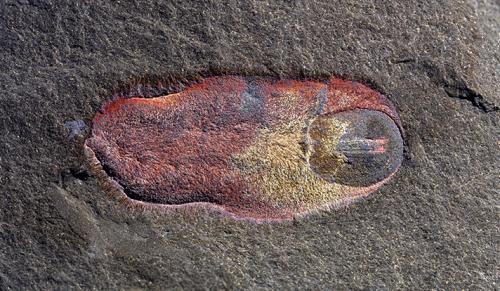
Reach back far enough in the family tree of a snail or a clam and you’ll find a spiny little slug with tiny teeth, wearing a helmet.
Scientists have unearthed the 480-million-year-old remains of a creature that reveals the earliest stages in the evolution of mollusks, a diverse group of invertebrates that includes squids, octopuses, snails, and clams. The discovery was announced in a paper published online Feb. 6 in the journal Nature.
The animal’s name is Calvapilosa — which means “hairy scalp” — and it came from a fossil-rich deposit in Morocco known as the Ordovician Fezouata Formation. The researchers said Calvapilosa is an early offshoot of the line leading to modern coat-of-mail shells or chitons. Calvapilosa has a tooth-lined jaw for feeding, carries a helmet-like shell on its head, and has spines that extend over its entire upper body.